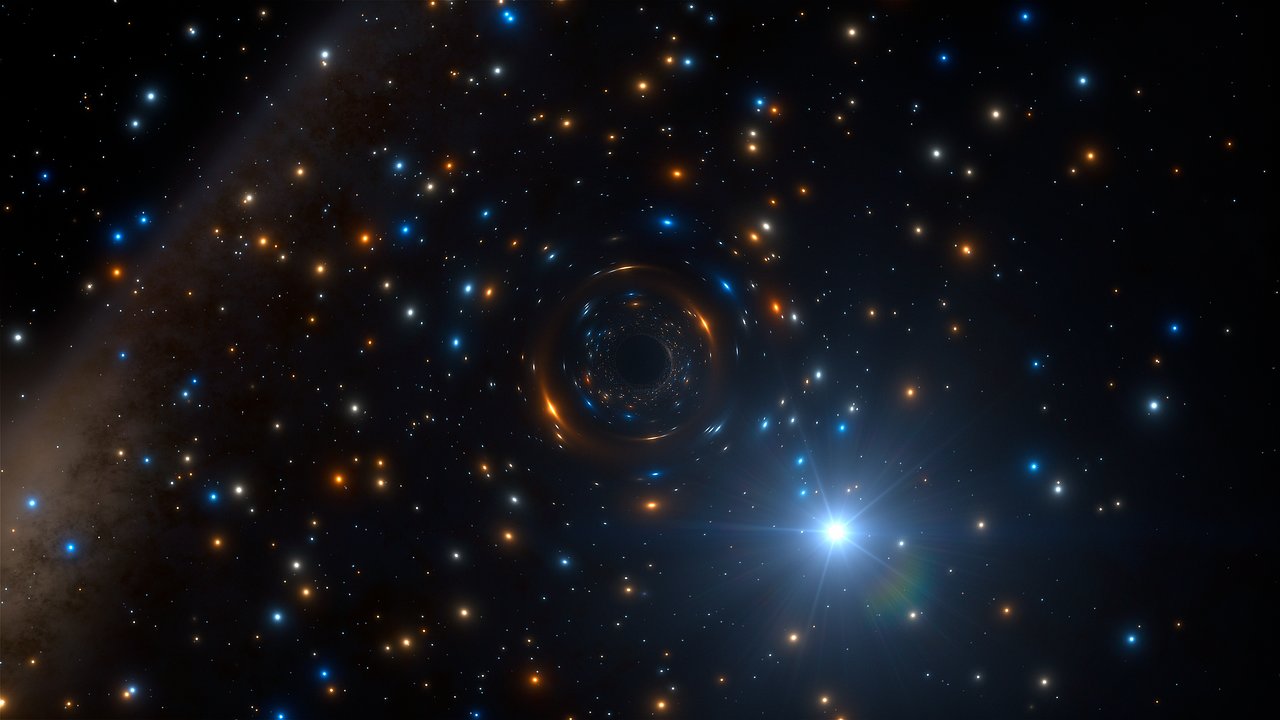Astronomers have been fascinated with globular clusters ever since they were first observed in 17th century. These spherical collections of stars are among the oldest known stellar systems in the Universe, dating back to the early Universe when galaxies were just beginning to grow and evolve. Such clusters orbit the centers of most galaxies, with over 150 known to belong to the Milky Way alone.
One of these clusters is known as NGC 3201, a cluster located about 16,300 light years away in the southern constellation of Vela. Using the ESO’s Very Large Telescope (VLT) at the Paranal Observatory in Chile, a team of astronomers recently studied this cluster and noticed something very interesting. According to the study they released, this cluster appears to have a black hole embedded in it.
The study appeared in the Monthly Notices of the Royal Astronomical Society under the title “A detached stellar-mass black hole candidate in the globular cluster NGC 3201“. The study was led by Benjamin Giesers of the Georg-August-University of Göttingen and included members from Liverpool John Moores University, Queen Mary University of London, the Leiden Observatory, the Institute of Astrophysics and Space Sciences, ETH Zurich, and the Leibniz Institute for Astrophysics Potsdam (AIP).
For the sake of their study, the team relied on the Multi Unit Spectroscopic Explorer (MUSE) instrument on the VLT to observe NGC 3201. This instrument is unique because of the way it allows astronomers to measure the motions of thousands of far away stars simultaneously. In the course of their observations, the team found that one of the cluster’s stars was being flung around at speeds of several hundred kilometers an hour and with a period of 167 days.
As Giesers explained in an ESO press release:
“It was orbiting something that was completely invisible, which had a mass more than four times the Sun — this could only be a black hole! The first one found in a globular cluster by directly observing its gravitational pull.”
This finding was rather unexpected, and constitutes the first time that astronomers have been able to detect an inactive black hole at the heart of a globular cluster – meaning that it is not currently accreting matter or surrounded by a glowing disc of gas. They were also able to estimate the black hole’s mass by measuring the movements of the star around it and thus extrapolating its enormous gravitational pull.
From its observed properties, the team determined that the rapidly-moving star is about 0.8 times the mass of our Sun and the mass of its black hole counterpart to be around 4.36 times the Sun’s mass. This put’s it in the “stellar-mass black hole” category, which are stars that exceeds the maximum mass allowance of a neutron star, but are smaller than supermassive black holes (SMBHs) – which exist at the centers of most galaxies.
This finding is highly significant, and not just because it was the first time that astronomers have observed a stellar-mass black hole in a globular cluster. In addition, it confirms what scientists have been suspecting for a few years now, thanks to recent radio and x-ray studies of globular clusters and the detection of gravity wave signals. Basically, it indicates that black holes are more common in globular clusters than previously thought.
“Until recently, it was assumed that almost all black holes would disappear from globular clusters after a short time and that systems like this should not even exist!” said Giesers. “But clearly this is not the case – our discovery is the first direct detection of the gravitational effects of a stellar-mass black hole in a globular cluster. This finding helps in understanding the formation of globular clusters and the evolution of black holes and binary systems – vital in the context of understanding gravitational wave sources.”
This find was also significant given that the relationship between black holes and globular clusters remains a mysterious, but highly important one. Due to their high masses, compact volumes, and great ages, astronomers believe that clusters have produced a large number of stellar-mass black holes over the course of the Universe’s history. This discovery could therefore tell us much about the formation of globular clusters, black holes, and the origins of gravitational wave events.
And be sure to enjoy this ESO podcast explaining the recent discovery:


A black-hole consists of Dark Matter: http://vixra.org/pdf/1303.0207v3.pdf
Here is more info on that document archive:
https://en.wikipedia.org/wiki/ViXra
It accepts submissions without requiring authors to have an academic affiliation and without any threshold for quality.
…
As a result, the site has a reputation among physicists for hosting “material of no interest”.